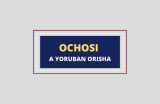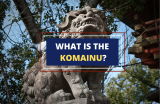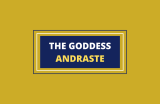Asteria was the Titan goddess of the stars in Greek mythology. She was also the goddess of nighttime divinations, including astrology and oneiromancy (the ...
Ochosi, also known as Oshosi, Ochossi or Oxosi, is a divine warrior and hunter as well as the embodiment of justice in Yoruban religion. He was a highly ...
In Japanese mythology,a Jorōgumo is a ghost, goblin, or spider, that can transform and shapeshift into a beautiful woman. In Japanese Kanji, the word ...
In the Roman Empire, several deities had associations with nature, animals, and plants. Flora was the Roman goddess of flowers and the season of Spring and ...
Diana was the Roman goddess of the hunt, as well as of the woods, childbirth, children, fertility, chastity, slaves, the moon, and wild animals. She was ...
In almost every culture, moon deities exist signifying the importance placed on the moon by the people of those cultures. In Greek mythology, Selene was the ...
The Komainu are a pair of Japanese statues carved in the shape of a dog or lion, and typically placed in front of Japanese Shinto shrines and Buddhist ...
In Japanese mythology, an onryōis a wrathful spirit, which roams the earth to take vengeance. It’s an unfulfilled and unsatisfied soul that has been ...
In Japanese mythology, the Mujina is a shape-shifting yokai (spirit) that mocks and deceives human beings. The word Mujina can refer to the Japanese badger, ...
In Roman mythology, Salacia was a minor yet influential goddess. She was the primordial female goddess of the sea and had associations with other deities. ...
Greek mythology teems with minor deities who influenced events with their powers and myths. One such goddess was Bia, the personification of force. Along ...
Andraste was a warrior goddess in Celtic mythology, who was associated with victory, ravens, battles and divination. She was a strong and powerful goddess, ...
- « Previous Page
- 1
- …
- 25
- 26
- 27
- 28
- 29
- …
- 38
- Next Page »













